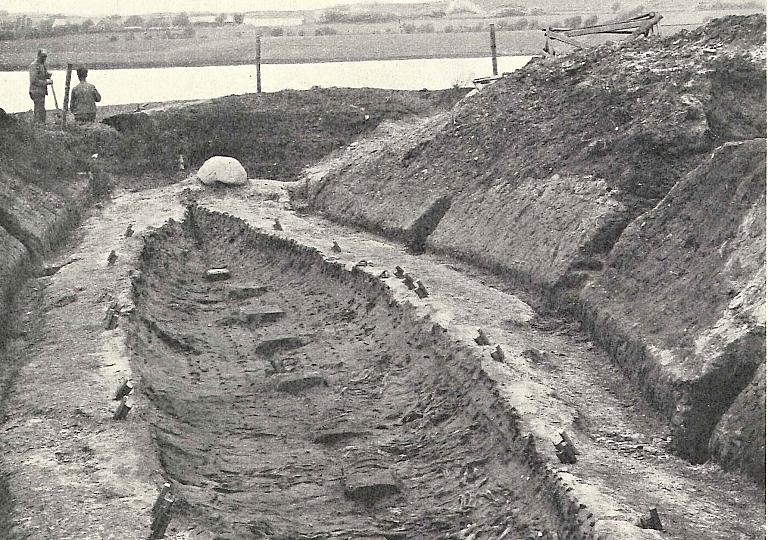The main attraction at the Viking Museum Ladby is the Viking Ship Grave. Also referred to as the ‘Ladby Ship’, it was discovered in 1935 along with 11 smaller graves, which contained various grave goods. Archaeological studies have established that, in or around 925 AD, the Viking ship was pulled ashore and the deceased king was then buried in it in a mound with his horses, dogs, and other precious belongings.

As you enter the burial mound and things get darker, you immediately sense the very special atmosphere of the Ladby King’s grave. Once your eyes have gotten used to the darkness, you catch your first sight of the burial ship and its shape and structure, including the 2,000+ nails and spikes that hold it together.
The ship is almost 22 metres long and about 3 metres wide. It was built for 30-32 oarsmen and was fitted with a sail. Nothing of the sail or mast remains, but 7 rigging rings roughly in the middle of the ship along the supposed gunwale establish that the ship was seaworthy. It is estimated that the sail was 60 m2.

The prow was shaped like a dragon’s head with a main of iron curls, and the aft stern was a curved dragon’s tail. The ship’s incredibly well-preserved anchor and anchor chain, and remnants of rigging, are located at the prow. The ship also contains the remains of the horses and dogs that accompanied the king on his final voyage.





